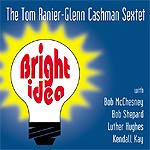Home » Jazz Articles » Live Review » Jazz in July at the 92nd Street Y--Diz and Bird: Bebop Today
Jazz in July at the 92nd Street Y--Diz and Bird: Bebop Today
The performance brought back the whole question of 'What is jazz?'
Bird & Diz: Bebop Today
92nd Street Y
New York, NY
July 19, 2007
The Jazz in July series, which runs from Tuesday through Thursday for two weeks, is a venerable institution that has existed for the past twenty years. In the past, pianist Dick Hyman was the creative director, but this is the third year under the direction of pianist Bill Charlap.
This night's theme, Diz & Bird: Bebop Today, had the dual purpose of exploring the nature of bebop and how it differed from the previous era, Swing, but also of showcasing the members of the One For All band as modern-day keepers of the flame first lit by Charlie Parker and Dizzy Gillespie (among others, to be sure) sixty years ago.
The venue at the Y is a concert hall rather than a jazz club, and as such created a feeling of separation and audience passivity rather than the direct communication between players and audience that a club provides. Charlap intensified this feeling by lecturing (without overstaying his welcome) about various aspects of bebop in general and Parker in particular.
Thus, there would be some words, and then some music. There were two main groups: trumpeter Jim Rotundi and alto saxophonist Jon Gordon fronting the rhythm section of Charlap with bassist Peter Washington and drummer Kenny Washington, and then the One For All group proper with pianist David Hazeltine replacing Charlap, drummer Joe Farnsworth replacing Washington and trombonist Steve Davis and tenor saxophonist Eric Alexander joining the front line.
Obviously, the quintet was meant to reflect the original quintet with Gillespie and Parker. They played some of the chestnuts from that period including Gillespie's "Groovin' High" and Parker's "Ornithology," but the standout tune in the first half was the Gershwin ballad on which Bird recorded a much-analyzed, critically acclaimed solo, "Embraceable You."
Gordon, given the freedom of the slower tempo, sang through his horn and really spoke to us through the music, as contrasted with the breakneck lines running the changes in the harmonic and rhythmic language of Parker or Gillespie. The same was true for Rotundi in the second half, when he was the main soloist on the ballad, "I Waited For You."
Bebop is as much about the rhythm section as the soloists, and Peter and Kenny Washington (not related), who have played together many, many times were locked, light and supple. Charlap has played with them also, and as a rhythm section this trio was superb.
The tunes that One For All played sounded, in contrast, not as sharp or in sync, and the responsibility fell mainly to Farnsworth. Admittedly, the band might have been at stylistic cross-purposes since, while their main language harkens directly back to bebop, they play a modernized version of it. Farnsworth seemed overly busy and did not mesh with bassist Washington as well. In addition, Washington's bass became indistinct and muffled by the front line, but that could have been the sound of the hall.
Hazeltine's sound was also dramatically different from Charlap's, his attack considerably harder and sharper. Besides this eye-opening, very obvious difference, his chord constructions were denser and did not complement the frontline's bebop vibe as well, adding to the sound confusion.
On the plus side, Gillespie's "Manteca" and the closing "Woody'n You" were exciting since there was less formal structure and more improvising, with the players listening to each other and picking up one another's ideas.
While the crowd was standing and applauding when the show finished, the overall impression to this listener was one of somewhat sterile, "museum jazz," which was reinforced by the showing of the famous "Hot House" film clip featuring Bird and Diz.
At least the performance brought back the whole question of "What is jazz?" Charlie Parker, almost singlehandedly it seemed, created a new language, both harmonic and rhythmic, and was a true original. In contrast, the music played tonight consisted of many direct quotes from the repertory of licks by Gillespie and Parker and, though much in the style, felt like a mere shadow of the original.
Is jazz a living, breathing, constantly changing and hence surprising art form, or is every player forced to "walk through the door that Charlie Parker created" and play what is expected?
Tags
PREVIOUS / NEXT
Bill Charlap Concerts
Support All About Jazz
 All About Jazz has been a pillar of jazz since 1995, championing it as an art form and, more importantly, supporting the musicians who make it. Our enduring commitment has made "AAJ" one of the most culturally important websites of its kind, read by hundreds of thousands of fans, musicians and industry figures every month.
All About Jazz has been a pillar of jazz since 1995, championing it as an art form and, more importantly, supporting the musicians who make it. Our enduring commitment has made "AAJ" one of the most culturally important websites of its kind, read by hundreds of thousands of fans, musicians and industry figures every month.






















